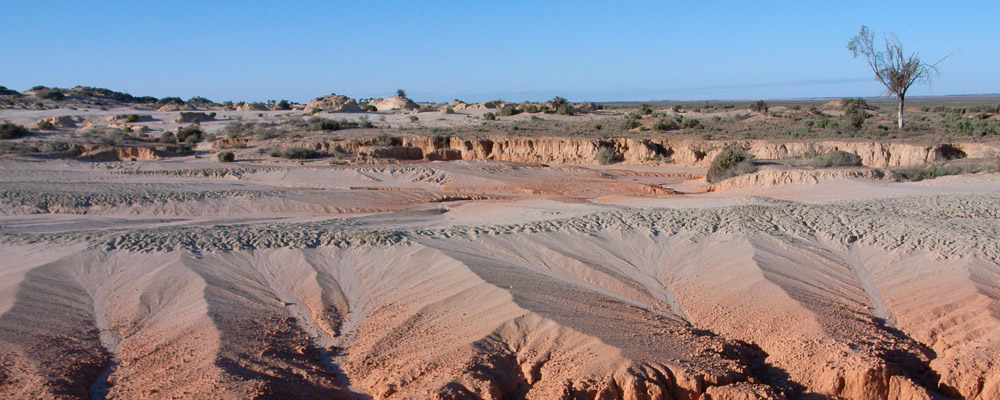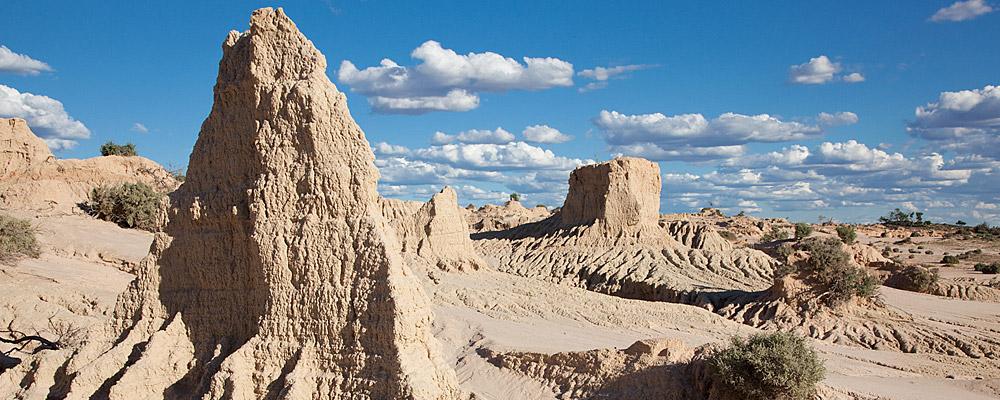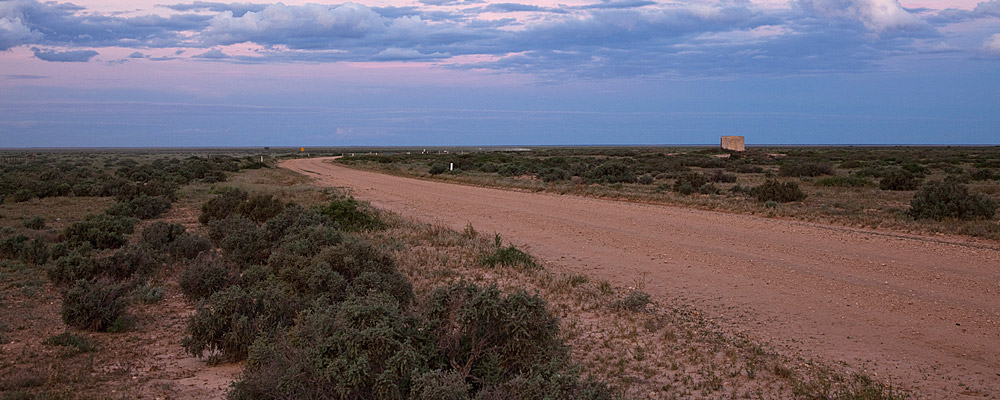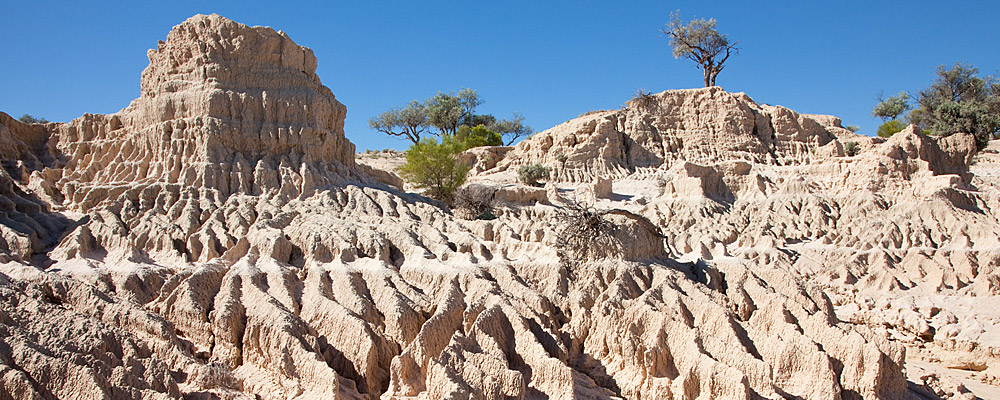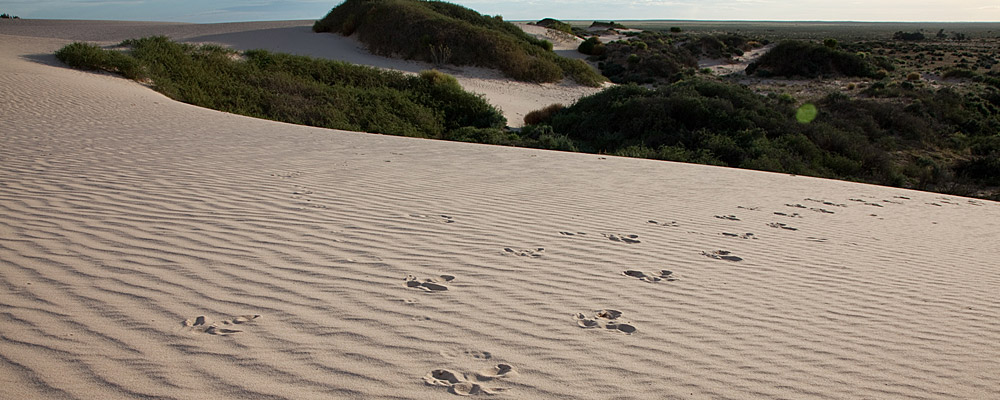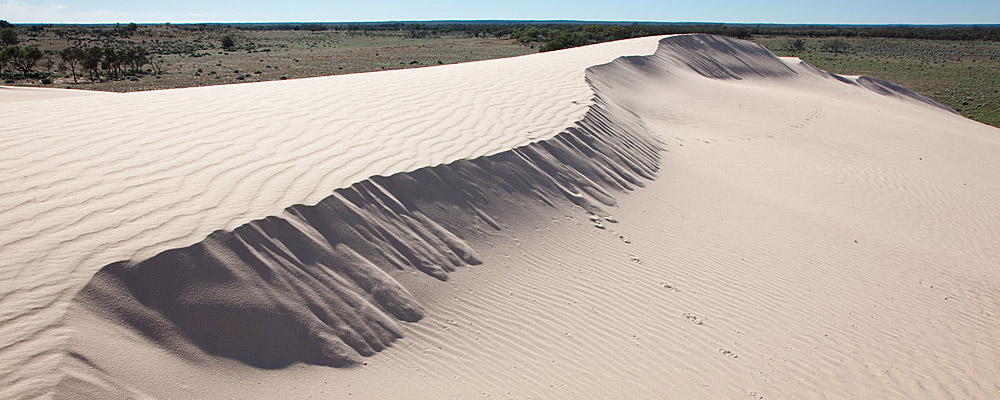Understand Mungo
Mungo Archaeology
Dating the past
Working out how old archaeological remains are is a vital part of archaeology. Scientific dating has confirmed the long residence of Aboriginal people in Australia. A number of methods are used, all of which have their advantages, limitations and level of accuracy. Complex dating problems often use a variety of techniques and information to arrive at the best answer.
Artefacts and other materials can be dated in relative terms by observing which layer of sediments they are found in. This applies the geological principle that under normal circumstances younger layers of sediment will be deposited on top of older layers. This 'law of superimposition' works in the well-defined layers of the Willandra lunettes, but only dates objects as younger or older than adjacent layers. To determine the year age (absolute age) of an object, a number of chemical and radioactive techniques can be used. Four main methods have been used in Willandra archaeology.
Radiocarbon dating
This well known method was the first technique that became available for accurate dating of old materials. It uses the fact that natural carbon contains a known ratio of ordinary carbon and the radioactive isotope carbon-14, and that this mix is reflected in carbon taken up by living organic materials such as wood, shells and bones. When organisms die, the carbon-14 begins to decay at a known rate.
Carbon-14 has a half-life of 5,730 years so dating is limited to between a few hundred and about 50,000 years. Outside this range it becomes too inaccurate. It is also important that samples for dating are collected carefully to ensure they have not been contaminated with more recent carbon. Radiocarbon analysis can only be used on organic materials, and is often used to date charcoal associated with campfires and archaeological deposits.
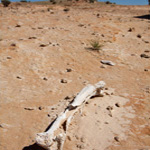
Potassum-argon dating
Potassium-argon (K-Ar) dating is a radiometric technique that is used to determine the age of minerals that contain potassium, which include clay minerals and micas. It is most useful for minerals older than 100,000 years and can reach way back into the geological past.
The measurement is based on an isotope of potassium that radioactively decays at a known rate into argon. K-Ar dating has been used to date lava flows above and below archaeological deposits that contain important hominid fossils in Africa's Olduvai Gorge.
Optical dating
Optical dating, also known as optically stimulated luminescence (OSL), dates the last time mineral sediments (usually quartz or feldspar grains ) were exposed to sunlight. In the Willandra area it is typically used on quartz sand grains which have been buried and have not been exposed to sunlight since burial. These grains absorb radiation over time from the surrounding sediments and the radiation (electrons) remain trapped within the mineral grain structure. When the grain is exposed to intense light of particular wavelengths in the laboratory, it emits a light signal with an intensity proportional to the radiation it has absorbed while buried.
This technique can determine ages between a few hundred years to more than 100,000 years. It has been used at Willandra to date the layers above and below the location of Mungo Lady and Mungo Man , and the layers above and below the footprints horizon. Dates above and below a location provide minimum and maximum age determinations according to the law of superimposition.

Thermoluminescence dating
Thermoluminescence is a similar technique to optical dating, but uses heat instead of light to stimulate the minerals. The method also assumes a 'zeroing' event in the life of the material, when it was either last heated or exposed to sunlight.


